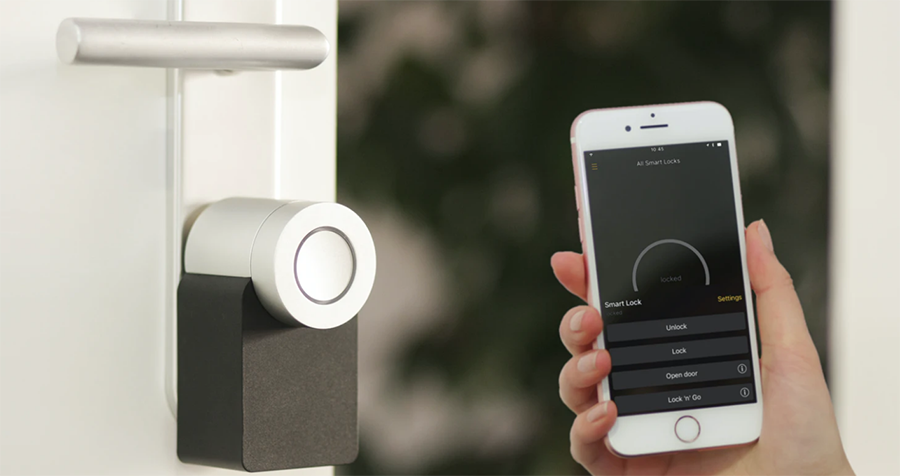Moving stage lights are versatile lighting devices that are an integral part of any large-scale live performance
If you have attended a concert, club, trade show or large wedding, then there is a good chance that you’ve encountered moving stage lights. Moving stage lights are the type of lights that physically move in order to carry out commands from the lighting technician. These lights are able to produce a wide range of colors and patterns, which makes them a staple for any large event. If you are a DJ or a novice lighting technician, this is a type of light that you will use for most events.
Moving stage lights gained traction for touring shows throughout the 90s and have only become more popular since then. In this article, we’re going to be going over how moving stage lights are controlled, the different types of moving stage lights, and how they are able to produce such diverse effects. If you are interested in learning more about how moving stage lights work and how you can use them to create impressive lighting landscapes, keep reading!
How Are Moving Lights Controlled?
Before we can talk about the lights themselves, we’re going to discuss how they receive commands 
Moving lights are able to create complex looking lighting effects, so many assume that a wealth of knowledge is required to operate them properly. In fact, operating stage lights is a lot easier than many assume thanks to DMX lighting.
A DMX controller is a type of lighting controller that is most commonly used for lighting applications large and small. A DMX controller looks like an audio mixing board—and it works in a similar way. Using the dials and sliders, lighting technicians are able to alter the appearance and movement of the lights in real-time. It is also possible for DMX users to program lighting “scenes” that can be saved and called up on command. By sequencing these scenes, lighting technicians are able to create a full set of lighting effects—much like a DJ.
The main DMX controller is connected to the lighting fixtures—like the moving lights—via DMX cables. DMX cables transmit the information from the DMX controllers to the light fixtures. These cables need to be physically connected to the lighting fixtures and are unable to provide power. Since DMX cables are unable to provide power, the light fixtures require a separate power source. In order to get the lighting effects desired—and required for many situations—technicians connect the DMX cables in a formation called a daisy chain. The daisy chain allows several fixtures to project the same lighting commands at once, creating impressive lighting effects.
Now that we know a little bit more about how these lights are controlled, it’s time to take a closer look at the different types of moving headlights and their functions.
What are the Different Types of Moving Lights?
Moving light come in a several different categories that serve important purposes for events and performances
Moving lights are not all the same, they come in a few different varieties. Today we’re going to be exploring moving head lights, moving mirror lights, wash lights, and profile lights. Let’s dive in!
What is a Moving Head Light?
A moving head light is the most basic type of moving stage light. Moving head lights are able to rotate both horizontally and vertically to cast beams of light in many different directions. The lights themselves are located in the egg-shaped moving lamp and so are the motors used for movement. In this form of moving stage light, the whole lamp moves to project light in the intended direction. Moving head lights tend to be expensive and are used in larger applications that require 360/180 degree rotations.
What is a Moving Mirror Light?
A moving mirror light is able to achieve many of the same effects as the moving head light, but with a different mechanism. Instead of rotating vertically and horizontally, mirrors within the moving head are able to project light in different directions. The light head still moves, but not nearly to the capacity of a moving head light. Generally moving mirror lights are able to rotate up to 135 degrees. In terms of cost, moving mirror lights are less expensive than moving head lights. If you notice a moving stage light in a small bar or club, it is likely this type of light. Of course, there are more expensive models as well that are used for touring stage productions.
What Are Wash Lights?
Moving stage lights are also able to be broken into different categories based on the type of light they produce. One of these lighting styles is called wash lighting. Wash lights are designed to illuminate the stage or dancefloor area with uninterrupted light. These lights provide the foundation for more complex lights and set the vibe for the light show. If you are a novice lighting technician or a DJ, wash lights are the first thing that you should focus on when planning a light show. Think of wash lights as the backdrop for other kinds of stage lighting.
What Are Profile Lights?
Profile lights, unlike wash lights, are designed to project different designs using beams of light. Where wash lights project vast swathes of light over a stage or dancefloor, beam lights are able to project designs that add to the overall lights show. In order to achieve the beam effect, a single column of light is split into many using a gobo. A gobo located in the head of the light is positioned in front of the beam. Depending on the design of the gobo, the light beams will project in different patterns. Where this technology was once fairly remedial, the advent of LED lights has allowed profile lights to create complex designs from a single fixture.
What is the Best Light Source For Moving Stage Lights?
Any type of stage lighting that operates without LED is likely out of date
Historically, moving stage lights have used HMI or HID lights in order to achieve different lighting effects. While these types of lights worked well to achieve impressive lighting effects, they were unfortunately not very long lasting and are inefficient compared to more modern lights. Right now, the vast majority of stage lighting relies on LED technology. Nowadays, HMI lights are most commonly used on Hollywood sets to provide additional daylighting.
LED light fixtures are far more reliable, efficient, and versatile than the HMI or HID lights. Instead of using colored lenses to achieve different colored lights, LEDs are able to create a diverse set of colors without any other apparatus involved. The use of lenses also dims the overall brightness of the light, which leads to energy-inefficient operations. LEDs also create far less heat, which makes them the safer option as well.
Moving lights are one of the main forms of lighting for many traveling shows, bars and clubs—which means that they are one of the most popular and versatile lighting fixture types on the market. Even with just a few moving lights, a space can be completely transformed to suit the show or the music from a DJ. Though this type of lighting was once far more complex and expensive to operate, with the popularity of LEDs these moving lights have become more affordable than ever. Not to mention, moving lights are easy to command using DMX. If you are putting together your first light show, moving lights are a great place to get started when it comes to building your own lighting setup. From there, you can add additional devices for more complex shows!











